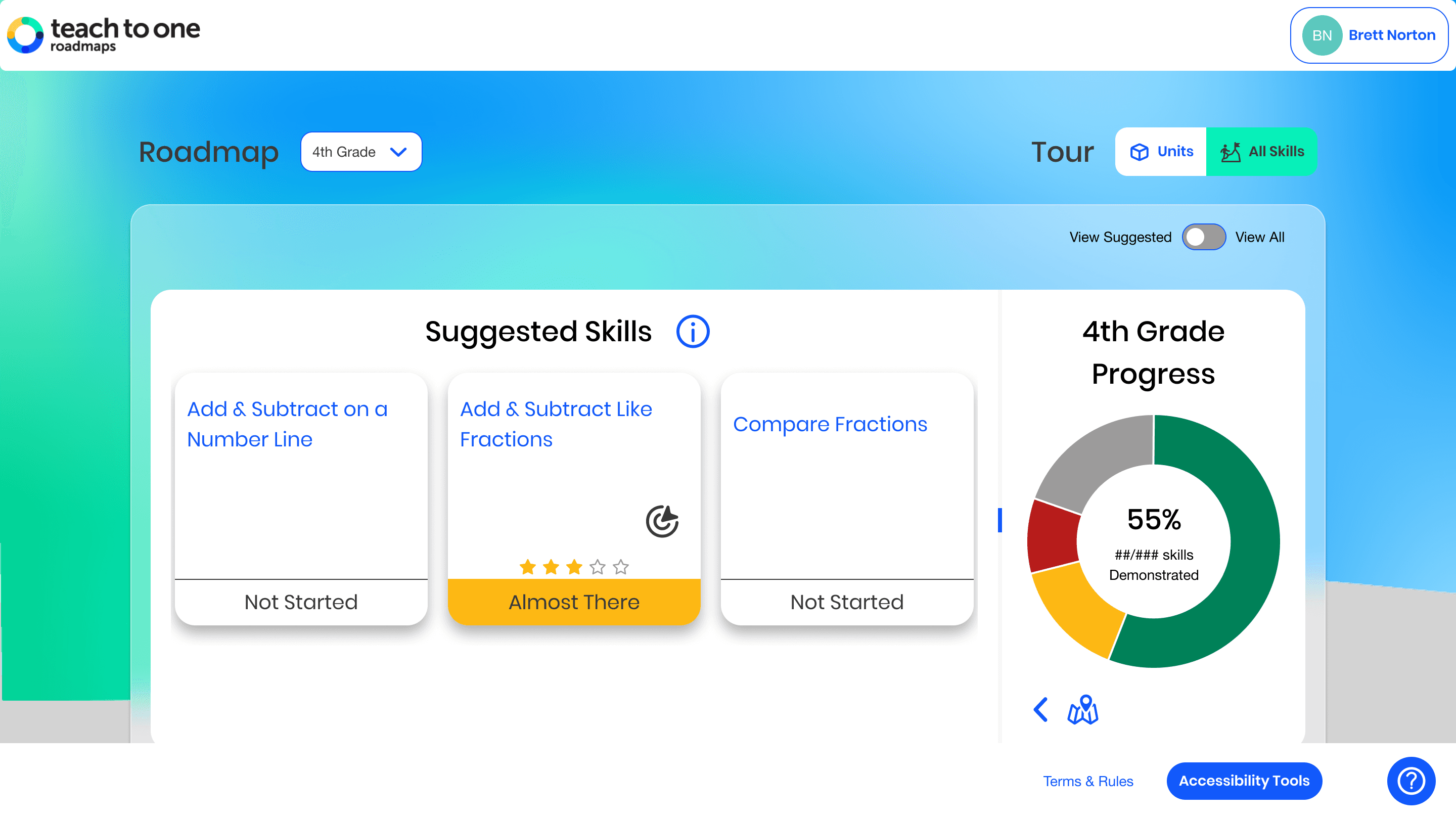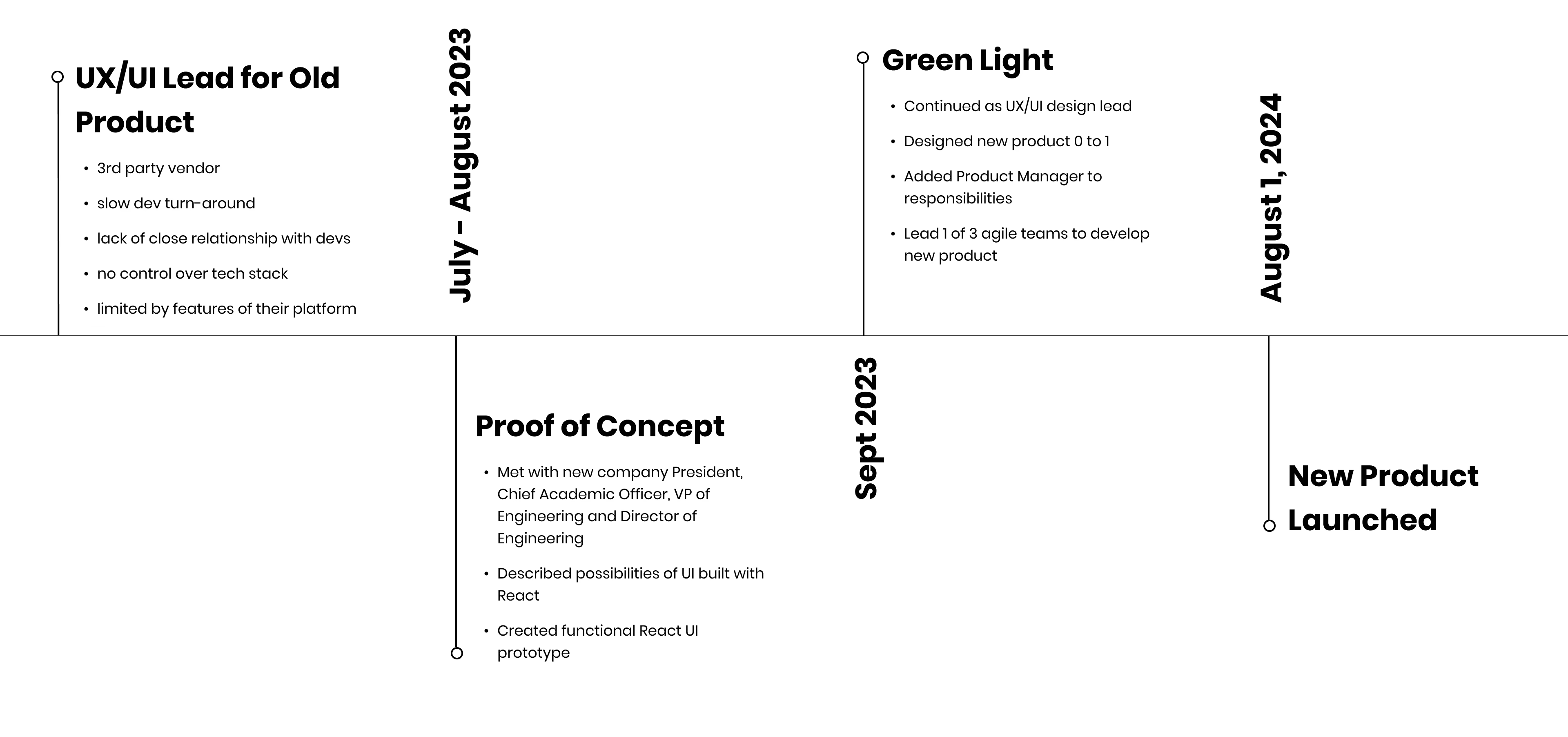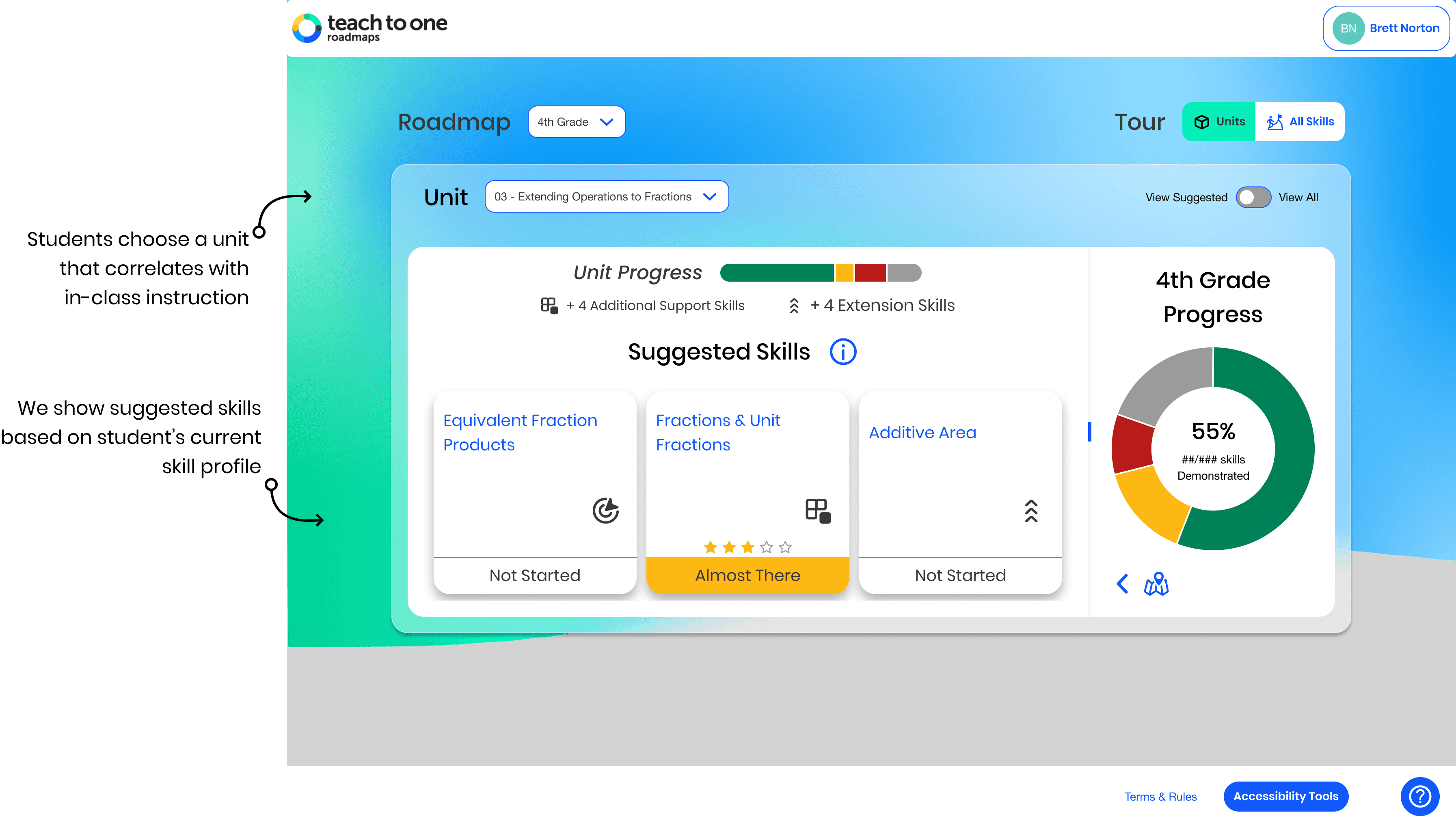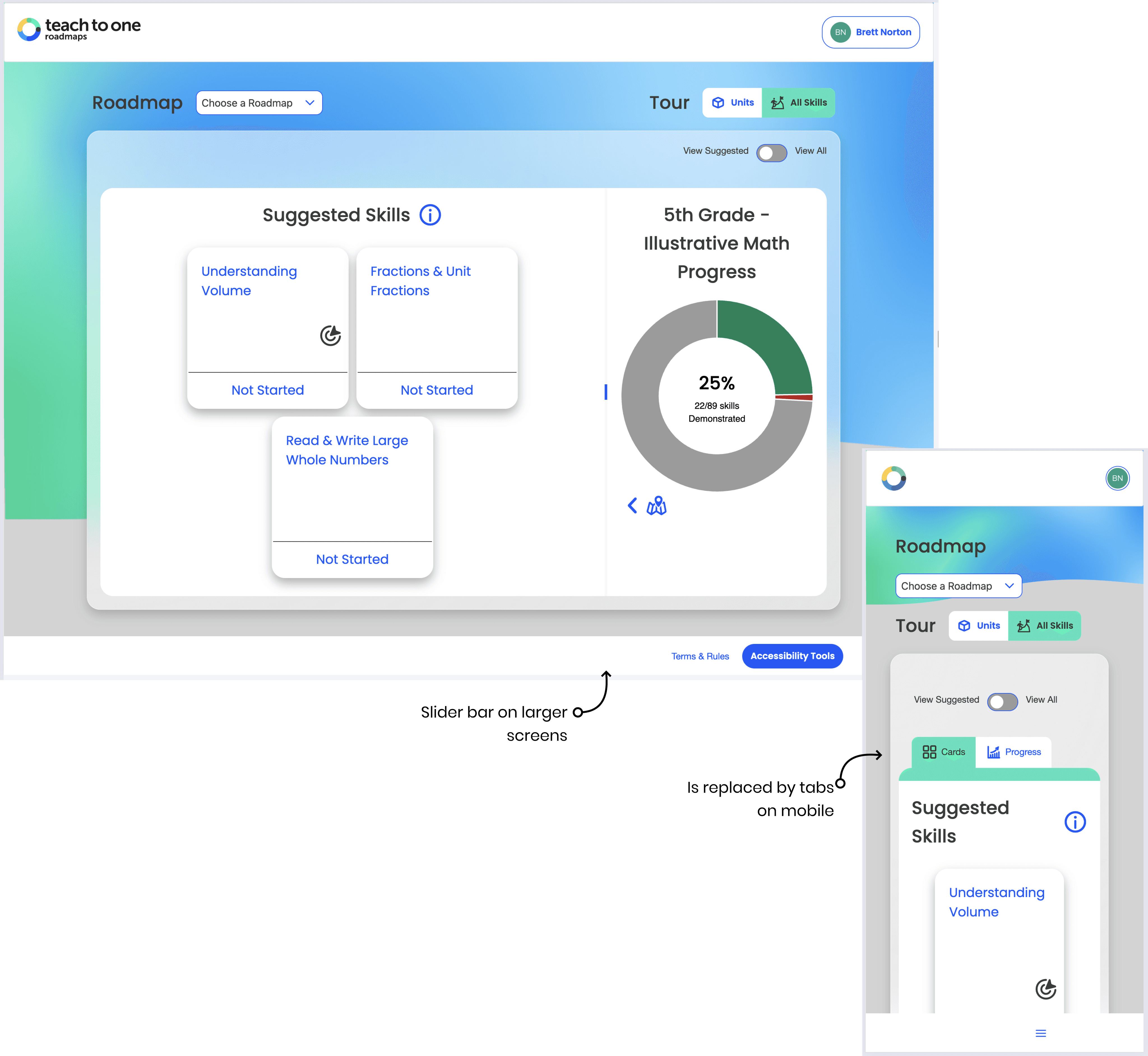0 to 1 Re-imagine and Rebuild
10 Months
Product Leadership
Product Manager
Product Designer
Processes & Workflows
Product Strategy
UX/UI Lead
UX/UI Research
UX Design
Design Systems
UI Design
Usability Testing
Front-End Documentation
Front-End Dev (CSS, React)
Goal
Re-image our product from a "tries to do a lot and does none of it well" product to one with a focused set of features to help teachers incorporate personalized math learning into traditional math classrooms.
Constraints
Aug 1, 2024 launch date - our old platform contract was ending July 31.
Limited development resources and new tech stack.
Be acceptable to users of the current product for continuing contracts and renewals while shifting from a "lots of features to meet every need but none done that well" to a "focus on our core value and think deeply about the features that support it"
Summary
While we didn't throw out our philosophy (that every student should have personalized math learning experiences), and we still used our institutional understanding of how students learn math skills, we did get rid of all other notions of what our product had been in the past and focused on what it needs to be to solve the problem of helping teachers facilitate personalized learning in classrooms with core curriculum and diverse student populations.
The result is a web application with a streamlined experience for students, and the features for educators focused on our singular goal of incorporating personalized education into the realities of the classroom setting, and organized by task.
18% Increase
Percentage of student licenses sold that are rostered into classes
41% Increase
Percentage of rostered students completing a diagnostic
Process
Advocacy & Set-up
My Contributions
Lead the discussions & documentation
(Jira project structures, workflows, user research protocols and more)
Selected React component and CSS libraries
Built Design System in Figma - interactive components with properties and variable library.
Created UI Style Guide in Storybook
User Needs
My Contributions
Served as a resource for user research for various org members that would participate - holding workshops for interview and observation techniques.
Lead consolidating user research from sources across the org
Implemented Dovetail as a research and insight tool
…and Business Outcomes
Take-away
We measured every potential feature for the new product against this product strategy - will it help teachers plan individualized instruction within a classroom setting and a unit planning framework?
If not, it didn't make it into the new product.
Business Outcome Informed Design Decisions
Take-away
I dug further down into the core needs of users that led them to assign skills to students…
WHY did teachers want the assignment feature?
What purpose was it serving for them?
Could we meet that need in a different way that more closely aligned with our business outcomes?
Impact
Allowing students to see suggested skills within a single instructional unit met the core user need and the business needs…and it did it with automating a process the teachers used to have to do manually!
Data Informed Design Decisions
Impact
UI was tested before releasing to end users, allowing iterations to be made and the released product to be a better version than if I hadn't implemented usability testing prior to release.
Accessibility & Responsiveness
Accessibility & Responsiveness
WCAG 2.1 AA compliance verified & documented
Implementation of video player with English & Spanish captions for all instructional videos
Inclusion of 3rd party tool for in-app text-to-speech, translation and other tools such as highlighting
Selection of React component library with accessibility features built in
Documentation for Front-end developers included aria properties and alt text
Fully responsive with large, medium and small breakpoints
Reflections
Keep editing and refining the roadmap with a focus on the product strategy
When you solve one core need, there may be others that are the same at the surface level but need a different solution
It was the right move to focus on the product strategy of supporting teachers as they planning personalized learning within the context of instructional units in a diverse classroom.
And the combination of unit selector and suggested skills did meet ONE core need that was under the request for the ability to assign skills.
But we've uncovered other core needs in our feedback post launch beneath the "I want to assign skills to students" requests, such as:
Some teachers doesn't trust the suggestions - they seem to advanced for the student
Some teachers want to use our product to auto-suggest and ALSO as daily exit slips for students, which would require assigning a specific skill for that date
The first core need wouldn't be well-served by an assignment feature, but instead suggests we need to take a look at the suggestion algorithm.
The second core need is narrow and specific and now we can design a targeted assignment feature to meet that need!







